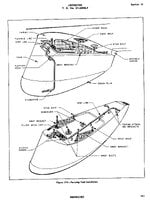Curtiss P-40 Tomahawk couldn't do it? 'It' being the Tac/R role? Four ACC Squadrons were approved to use Tomahawks on Tac/R operations over occupied Europe on 15 August 1941. Main issues with the RAF Tomahawks preventing wider use at the time was the 'mixed bag' of the various sub-types in various states of modification, plus complications like the French contract aircraft with instruments in metric and 'reversed' engine controls, no armour plate and no self sealing fuel tanks. Add to that a number of issues with the engines and ancillaries eg. coolant leaks from radiators (foreshadowing similar issues encountered with the early Mustangs), repeated breakages of the generator drive, issues with the drive gearing, plus a couple of basic issues with the armament - UK had only been supplied with old manufacture 0.300in US BALL ammunition for the wing guns, no tracer, no SAP, and the 0.50in ammunition received was also of variable quality which didn't help with the nose gun synchronisation. But the four Squadrons approved for operational use, being 26, 239, 268 and 400 (RCAF) got on with it a flew a number of sorties along the Dutch and Belgian Coasts and over Northern France from September 1941. In a number of instances where the Tomahawks were intercepted at low level by Bf109s, the pilots reported that they were more than comfortable with their speed and handling in the resulting combat. For the sorties over northern France, the tactics they trialled and adopted on the P-40s were similar to those eventually used when they re-equipped with the Mustangs. Low level, pairs, making use of suitable weather, maintain a relatively high cruise speed over the enemy coast, regular changes of course to throw off potential interception by enemy fighters, and detailed planning.The RAF tried the P-40 i the T/R role from UK and it couldnt do it, the Mustang Mk I excelled at it.
Just as those Squadrons were getting into their operational activity and there were plans to expand it to other ACC Squadrons in early 1942 a couple of things happened.
1. The Mustang was starting to arrive in the UK and the discussion about the ACC Squadrons taking on the Mustangs was starting. It took a little while for all the various parties involved in the decision making process to come to agreement, but ACC took the Mustangs as best of what was on offer at the time. Other alternatives were being discussed to equip the ACC Squadrons including the likes of the Brewster Bermuda or Vultee Vengeance (the Army's obsession with the RAF having dive bombers for close support was still rampant) or even the P-39 Airacobra (trialled for the ACC role and rejected on a number of grounds).
2. Decisions about utilisation of aircraft in the different theatres of operations were occuring within the Air Staff from mid-1941 onwards with where to best place the UK manufactured types such as the Spitfire and Hurricane and expected future fighter types, versus the US manufactured types. So you get the decisions to send P-40s to the Middle East and Brewster Buffaloes to the Far East. Then overlaid on the Air Staff deliberations, political decisions about supply of aircraft from the UK to the USSR.
But, the UK ACC Squadrons did keep a number of P-40s on strength up until mid-1943. Used primarily for training as well as the oblique and vertical camera installations that had been developed by the RAF for the Tomahawk. That was until such time as sufficient of the Mustangs could over time be modified with the required oblique and vertical camera installations.
AND, "Mustang at War" gives a very simplistic and less than accurate overview fo the RAF's development of its operations with the early Mustangs. The RAF ACC Squadrons that were equipping with Mustangs had been conducting fairly broad ranging offensive sorties of various types and names from May 1942, and started to ramp up their operations as more Squadrons converted to the type and the early reliability issues were sorted, so that by late June, more operations and expanding the areas over which they were operating. It was an incremental process, increasingly flying longer and more wider ranging sorties and getting used to the aircraft, refining the tactics and techniques used. Each set of sorties built on the previous set, taking what had been learnt, each time going a bit further into enemy territory and extending the duration of the sortie. There was a degree of relearning of some skills, especially around accurate navigation over the seas and land at low level. That was backed up by a number of long range training flights over the UK simulating long range offensive operations against targets in occupied Europe. So by the end of September 1942 the stage was basically set for the longer range sorties from the UK. There were a series of sorties going deeper and deeper into the Netherlands over a number of weeks. That then culminating in the SORTIES of 21 October 1942 when four Mustang I aircraft of No.268 Squadron RAF conducted the Rhubarb that reached into western Germany in the area along the Dortmund-Ems Canal near Heede, Lathen and Meppen. They were supported by a sortie by another four Mustangs of the Squadron who also made a Rhubarb deep into the Netherlands, more to the south and almost to the German border slightly before the other four. They would make a number of similar long range sorties ranging over the Netherlands in the next few months, running right up to the German border on a number of occasions.

